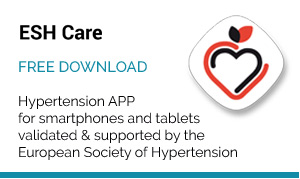June 16, 2007 – Milan, Italy – A significant reduction in blood pressure in patients with high-normal blood pressure and mild to moderate hypercholesterolemia (240-270 mg/dL) with atorvastatin, compared to a moderate sodium diet, and this reduction may be associated with a vasodilatory response and marginally related to changes in total cholesterol levels. More than 30% of the general population has both hypertension and hypercholesterolemia, and the level of hypercholesterolemia is in proportion to the blood pressure grade. The results of this single-blind, single-dummy, crossover study were presented by Prof. C. Borghi, Bologna University, Italy at the 17th European Meeting on Hypertension, held in Milan from July 15-19, 2007.
The 29 patients (9 women, mean age 33 years) had a baseline office blood pressure (OBP) of 137.8/86.2 mmHg, a BMI of 26.2 kg/m2, and urinary sodium of 137 mmol/24 hr. Examinations were performed at baseline, 8, 12, and 20 weeks, and included 24-hr ambulatory blood pressure (ABP), forearm blood flow (FBF), and forearm vascular resistance (FVR). Patients were randomized to either atorvastatin 20 mg daily or a reduced moderate sodium diet (100 mmol/day). All patients underwent a 4-week washout period, and all evaluations were blinded. The primary endpoint was change in blood pressure from baseline.
With atorvastatin, a reduction in systolic OBP was found and a significant reduction in diastolic OBP, and no difference was seen with diet. For 24-hr ABP, atorvastatin produced a slight but significant reduction in both systolic and diastolic pressures, because of a non-significant trend for a reduction with diet. Total cholesterol was significantly reduced from baseline and compared to diet (p=0.004 for both. Specific changes in OBP, ABP, and lipids are shown in the Table.
|
A slight but significant increase in FBF and a trend to reduce FVR compared to baseline, at rest and on exercise, was seen with atorvastatin, compared to diet. These effects suggest that atorvastatin may improve the peripheral vasodilatory capacity, and may explain one of the ways in which this drug contributes to blood pressure reduction, an effect seen in trials with these lipid-lowering drugs.
Data from a subgroup of the study, showed that in patients with the “Glu” haplotype for the Glu298ASP polymorphism of eNOS (nitric oxide synthase), there was an enhanced blood pressure reduction, supporting the heterogeneity of blood pressure response and a possible role for mechanisms related to NOS. The specific role of statins in blood pressure control warrants further investigation, Borghi concluded.






